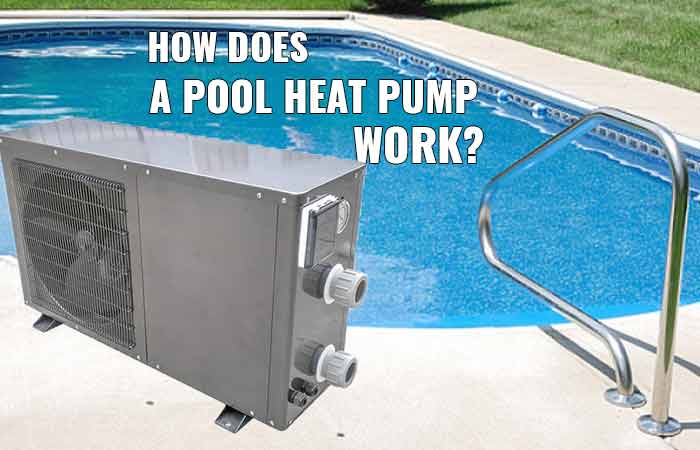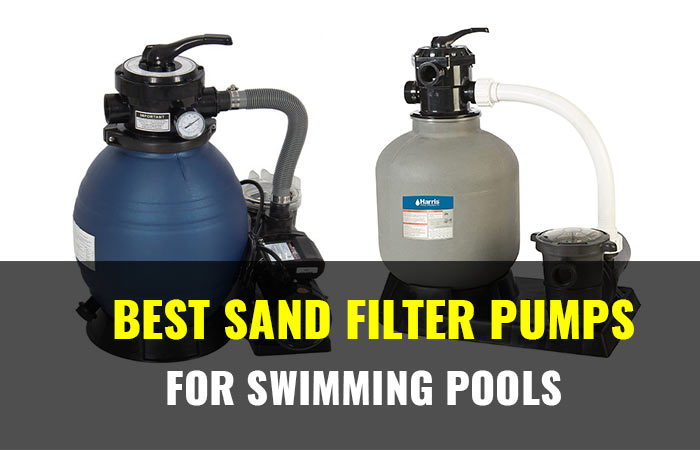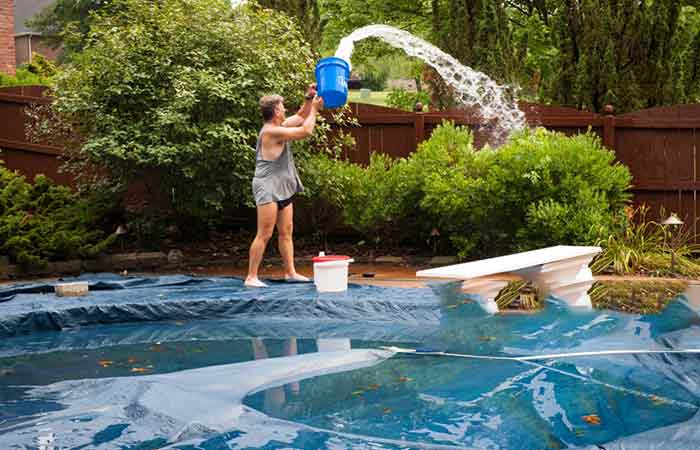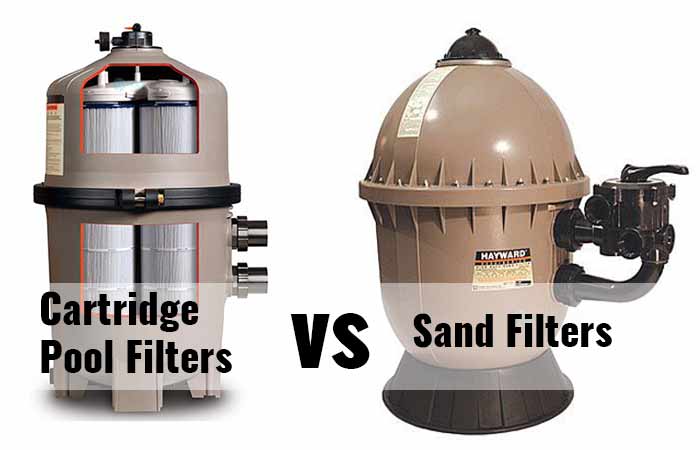Why is my Pool Cloudy? How to Clear Cloudy Pool Water Fast
We all desire to swim in a pool with crystal clear waters but, often, the pool turns out to be dirty in one way or the other. In most cases, the pool can become muddy or cloudy which makes it unfit for a swim. In such cases, finding out what’s causing the pool to be cloudy helps a lot in clearing the pool out.
Some of the causes of cloudy pool water include chlorine issues, calcium imbalances, hydrogen imbalances, too much rainfall, pool shocking and many others. It all depends on your prevailing conditions and how you clean your pool. At times, the water filter might be the reason.
When it comes to clearing cloudy water, it can be hectic and time-consuming. To do it fast, you need to test the water to establish the cause of the cloudiness then decide on the best method to clear it out. While clearing the water, you need to give it some time before jumping in for a swim.
Why is my pool water cloudy?
The reasons your pool water is cloudy can be any of the following:
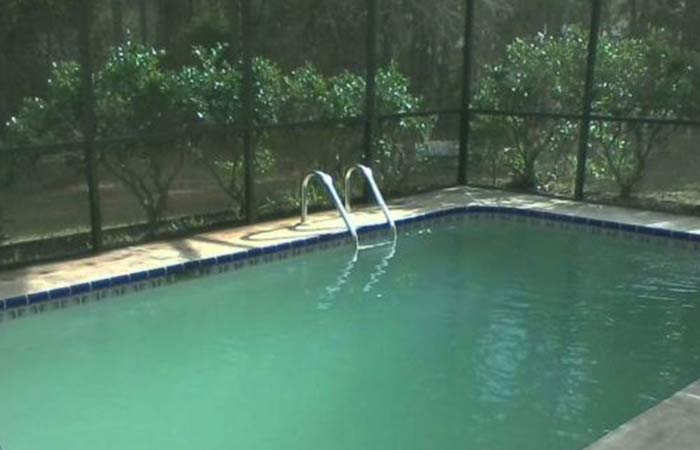
Chlorine imbalance
Chlorine and its compounds are added to the swimming pool water to kill pathogens that can cause diseases and infections to the users of the pool. These include legionnaire’s disease, ear and eye infections and athlete’s foot.
The amount of chlorine is determined by many different things including the following:
- The amount of chlorine added to the water: if you add large amounts of chlorine to the water, it’ll come out cloudy.
- Amount of sunlight reaching the pool: Ultra Violet (UV) light destroys chlorine in the water. As such, high amounts of sunlight will eventually reduce the amount of chlorine in the water.
- Amount of rainfall reaching the pool: rain water is pure water and adding it to the pool will dilute the amount of chlorine in it. For this reason, you should always test the water to know the amount of chlorine in it after the rains. Rain water can also add impurities to the water making it cloudy.
- The amount of people using the pool: the more the people using the pool, the higher the chances of the chlorine amounts going down. This is because people add other substances in the water such as oils, lotions, sweat, saliva and others which dilute the water. These substances can also increase the chlorine concentration if they have chlorine or its compounds in them.
You can always test the water for the amount of chlorine in it to determine if the cloudiness is caused by chlorine or something else.
Hydrogen imbalance
The amount of hydrogen in the water determines the acidity level of the pool. If it’s 7.0 or below that, the pool will be acidic. When it’s at 8.0 or above, the pool water will be basic. While a little acidity or alkalinity isn’t bad, the extremes aren’t good for the pool and the users.
When the pool is too acidic, the acid in the water can corrode the inside of the pool scrapping off the paint and other parts. This debris collects in the water giving it a cloudy look. On the other hand, a pool that is too basic will also be cloudy or murky as the base will destabilize the chlorine in the water.
In both cases, swimming in the water is risky as both strong bases or acids can harm the skin and eyes. In general, when the pool water is cloudy or dirty in any way, you shouldn’t swim in it.
Calcium imbalance
Calcium is a natural part of water and it determines its hardness and acidity. When the calcium concentration is too high, the water will be hard and it’ll appear cloudy or murky. Such a situation is dangerous given that it can lead to the damage of the water filter and other plumbing equipment.
On the other hand, when the levels of calcium are too low, they will increase the acidity of the pool leading to the corrosion of the pool’s surface and the plumbing equipment. The result is that the debris of the corroded surfaces will make the pool cloudy as well. Again, in either case, avoid using the pool for anything until the issue is addressed.
Too much rainfall
While rain water will dilute the pool making it clearer, it’ll also likely bring with it dirt and other debris which mess up the pool water. Also, rain water will likely tamper with the other chemicals in the water leading to undesirable colors. Most of the chemicals in the water are calibrated to be just right. Rain water can change that whether it’s pure or acidic rain.
Pool shocking
Pool water needs to be clear and without a smell. When you see algae or other items and also sense a strong smell, the pool will be in need of shocking. Pool shocking simply refers to adding specific chemicals to the water to regulate the amount of chlorine in it. The new chlorine concentration is aimed at killing the bacteria and other microorganisms in it and balancing out the smell as well.
When you shock the pool, the chlorine ppm will likely rise to about 10.0 which is enough to kill all microorganisms including bacteria and algae. It’ll also be enough to break down chloramines which are the chlorine compounds responsible for the chlorine smell in the water.
After shocking your pool, the high chlorine concentration will make it cloudy for a while. This is usually a temporary issue solved by running the water filter until the water is clear again.
Another reason the pool might become cloudy after shocking is when you shocked it at the wrong time. The right time is to shock the pool when the water’s pH is between 7.3 and 7.4. Any other pH value is wrong as you’ll be destabilizing the water’s bicarbonate compounds and any other added chemicals.
Shocking with the wrong chemicals can also lead to a cloudy pool. For example, if the calcium concentration in the water is already high, you shouldn’t shock the pool with chemicals made of calcium such as calcium hypochlorite. This will only add to the calcium in the water making it even cloudier and unusable. In some cases, you might even see floating calcium compounds.
The environment
At times, the causes of cloudiness in the water can come from the environment around the pool. Besides the effects of the sun on the chlorine in the water, cloudiness can come from the weather, birds, trees, construction dust, pollen from gardens, trees and algae. People can also make the water cloudy when they use the pool as the oils and chemicals on their bodies get washed off into the water.
Dysfunctional pool filter
If the pool filter isn’t working as expected, it’ll end up not cleaning the dirt out of the water fast and effectively enough to keep it clean. The filter needs to work correctly at all times and should have the filters replaced periodically to keep the water clean and clear.
How to Clear Cloudy Pool Water Fast
Knowing the causes of cloudy water, you should head over to their solutions to keep your pool crystal clear and ready for a swim. The solutions and their steps are as follows:
1. Test the water to establish the cause of the cloudiness
While telling that water is cloudy is quite easy, finding the cause of the cloudiness can be a bit tough. To establish the cause, you need to take a sample of the water then test it out with the right tools. After getting the sample, the most common testing methods are:
- Using reagents from a test kit. When added to the water, the reagents will change color accordingly to establish the imbalance in the water. You can then find a solution to the imbalance.
- Using test strips which are then dipped into the water to establish its level of hardness, acidity and basicity.
The pool water sample is best collected in the morning when the sun hasn’t depleted any chlorine from the water. Also, you should collect it about 18 inches from the surface for the best results.
If you find out that your water is high in basicity (high pH value), you can add a small quantity of Sodium Hydrogen Sulfate or Hydrochloric acid (HCl) to lower the basicity to the desired level. On the other hand, if the water is too acidic, you can add Sodium Carbonate to it to reduce the acidity. Cyanuric acid is used to regulate the chlorine levels of the water.
2. Use a pool flocculant
A pool flocculant, usually called a pool flock, is a powder which is dissolved in water then added to the water. You then spread it on the surface of the pool’s water then turn off the pool’s pump for at least 2 days.
After that, the tiny particles causing the pool to become cloudy would clump together into larger particles which sink to the bottom of the pool. You can then easily remove the particles with a vacuum or some other method.
3. Use a pool clarifier
A pool clarifier is simply a chemical that’s added to the water such that it clears out a cloudy pool. It can also be used as a preventive measure against cloudiness. The pool clarifier works by clumping the small particles together so that they become larger and they can thus be cleared out by the pool filter.
4. Maintain the pool filter
The pool filter cleans the pool by filtering out any debris in the water. With time, the filters become clogged with dirt thus reducing its effectiveness at cleaning the water. For this reason, you need to keep the pool filter in great condition with the following practices:
- Change the pool filter cleaner at least twice per season (in the summer months when the pool is used more).
- Change the whole filter if it’s too clogged.
You should know that the pool filter only filters out tiny pieces of debris. The larger ones such as leaves are to be removed manually with a net or bucket.
5. Reduce the pool filter load
Pool filters remove lots of dirt from the water. However, they only do so from the top surface of the water. The debris that’s at the bottom of the pool won’t be removed from the water by the filter. Such debris can also make the water cloudy and without actively helping out the filter, you want have the crystal-clear water you desire.
Some of the ways of aiding the pool water include the following:
- Opening the drain: if your pool has a drain, you can open it occasionally to stir the particles at the bottom to the surface where you can scoop them away. Besides that, some of the particles will be drained away to keep the water clean.
- Vacuuming the pool: a vacuum cleaner can help stir the dirt at the bottom to the surface where they can easily be filtered by the pool filter. You simply place it at the bottom of the pool then turn it upside down. The stirring motions of the vacuum cleaner are what brings the dirt at the bottom to the surface.
- Stirring the water: when people use the pool, they will naturally stir the dirt at the bottom to the surface for the pool filter. Also, you can simply stir the water with a long pool until the dirt at the bottom comes to the top.
- Removing dirt manually from the water: some dirt and debris can be removed with a net before they dissolve or sink to the bottom of the pool.
With these methods, your pool filter will have a lighter task cleaning the pool of the debris making it cloudy.
6. Improve pool maintenance practices
Even with the above practices, a poor pool maintenance routine will only lead to a cloudy and murky pool. Some of the maintenance practices to always carry out include the following:
- Each week, brush and clean the sides and bottom of the pool to discourage the buildup of dirt and algae.
- Frequently testing the water’s chlorine, pH, calcium and other chemicals levels to check whether they’re in good balance.
- Shock the pool every week.
- Check and remove debris as frequently as possible.
- De-clumping the filter every week.
- Using the drain for in-ground pools.
- Using a vacuum cleaner for above-ground pool.
With these methods, your pool will rarely become cloudy for long. This is because most them are meant to prevent dirt and chemical imbalances in the water.
7. Try Home Remedies (DIY)
Some home remedies for a cloudy pool include;
Pool Purifying Plants
Plants such as pond lilies oxygenate your pond and limit the growth of algae. These can also eat up bacteria which in turn helps eliminate the bad bacteria from your pool
Salt
Salt is made up of acids that prevent algae growth. At the same time, when salt breaks down, it converts into a bacteria-killing form of natural chlorine. The easiest way is to convert to a saltwater pool.
Hydrogen Peroxide
Hydrogen peroxide is a natural environmental-friendly chemical that acts as a chlorine alternative. It breaks down into water and oxygen.
Other DIY options
- Baking Soda
- Bleach
8. Use experts
If the solution to a cloudy pool isn’t within your reach, you can always call in experts who can do it for you effectively at a fee.

